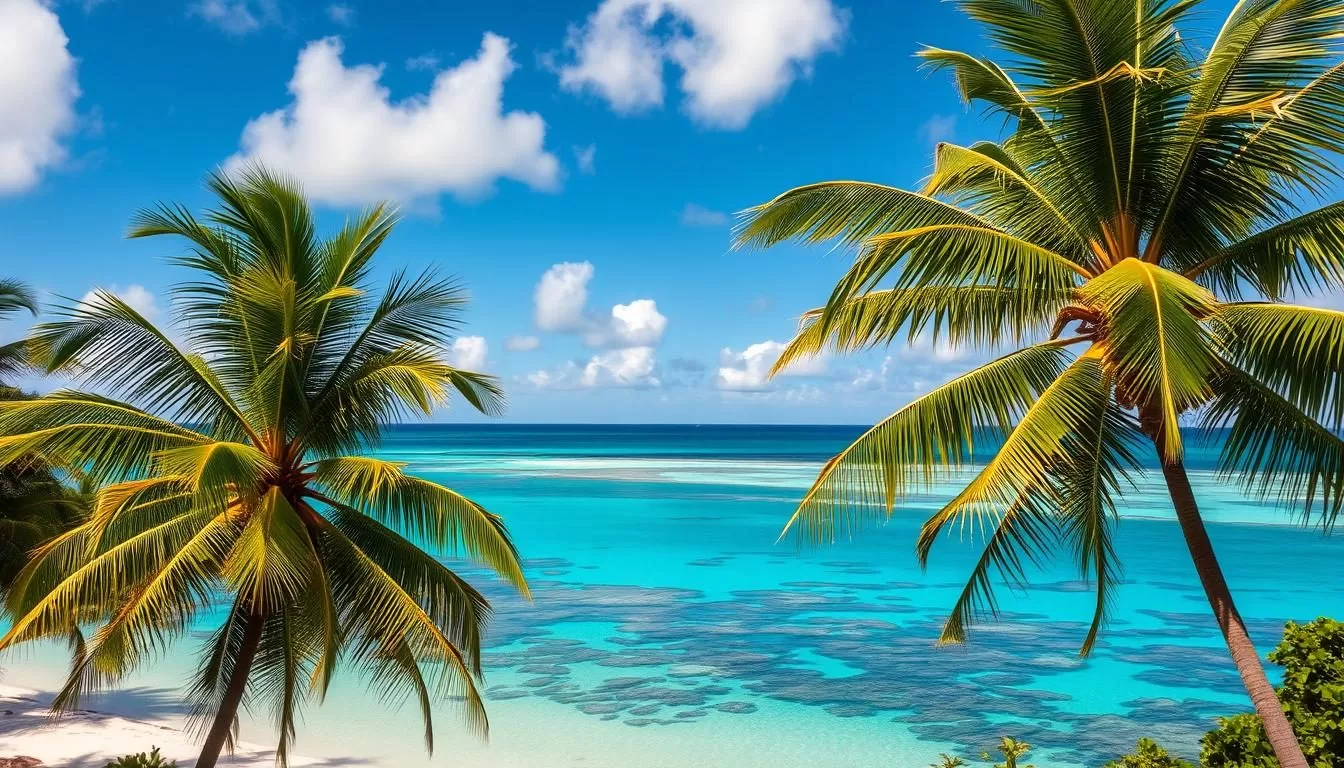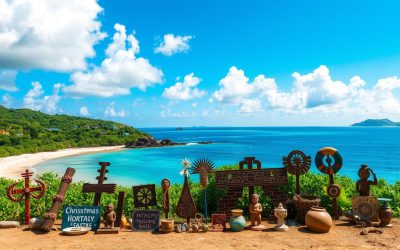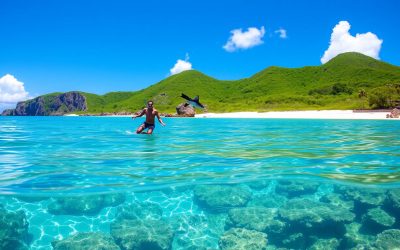✓ Accommodations✓ Flights✓ Rental Cars
Are you planning a trip to Christmas Island? This unique destination is known for its distinct weather patterns, which can significantly impact your travel experience. Timing your visit to Christmas Island is crucial to maximize enjoyment and minimize weather-related disruptions.
Understanding the island’s climate helps you plan activities, pack accordingly, and make the most of your trip. The island experiences both wet and dry seasons, each with different advantages for visitors. Factors like rainfall patterns, temperature, humidity, and natural phenomena determine the best time to visit.
This guide will provide you with comprehensive information to help you make informed decisions about when to plan your Christmas Island adventure. Different travelers have different preferences based on their interests, such as wildlife viewing, hiking, or diving. You will learn how to balance ideal weather conditions with other factors like crowd levels and travel costs.
Understanding Christmas Island’s Unique Climate
Understanding the climate of Christmas Island requires insight into its geographical location and its impact on weather patterns. Located near the equator in the Indian Ocean, Christmas Island is influenced by tropical weather systems.
Geographical Location and Climate Influences
Christmas Island’s geographical location near the equator means it experiences a tropical climate with minimal seasonal variation in temperature. The island’s proximity to the ocean and its topography also play significant roles in shaping its climate. The wet season typically occurs from November to April, while the dry season spans from May to October. This distinct wet and dry season pattern is crucial for planning your visit.
Year-Round Weather Patterns
Throughout the year, Christmas Island’s temperature remains relatively constant, with average temperatures ranging from 24°C to 28°C. The rainfall varies significantly between the wet and dry seasons, with the wet season experiencing heavy rainfall. Humidity levels are generally high, affecting comfort levels during your visit. Understanding these patterns helps you plan your trip during optimal weather conditions, making your visit more enjoyable.
By knowing the time to visit based on the seasons, you can make the most of your trip to Christmas Island.
Wet Season vs. Dry Season: What to Expect
Understanding the differences between Christmas Island’s wet and dry seasons is crucial for planning a memorable trip. The island’s climate is influenced by its geographical location, resulting in distinct weather patterns throughout the year.
Wet Season Characteristics
The wet season on Christmas Island, spanning from November to April, is marked by increased rainfall and higher humidity levels. During this period, the island experiences most of its annual rainfall, with some months seeing significantly more precipitation than others. The wet conditions can make some outdoor activities more challenging, but the island’s lush vegetation is at its most vibrant.
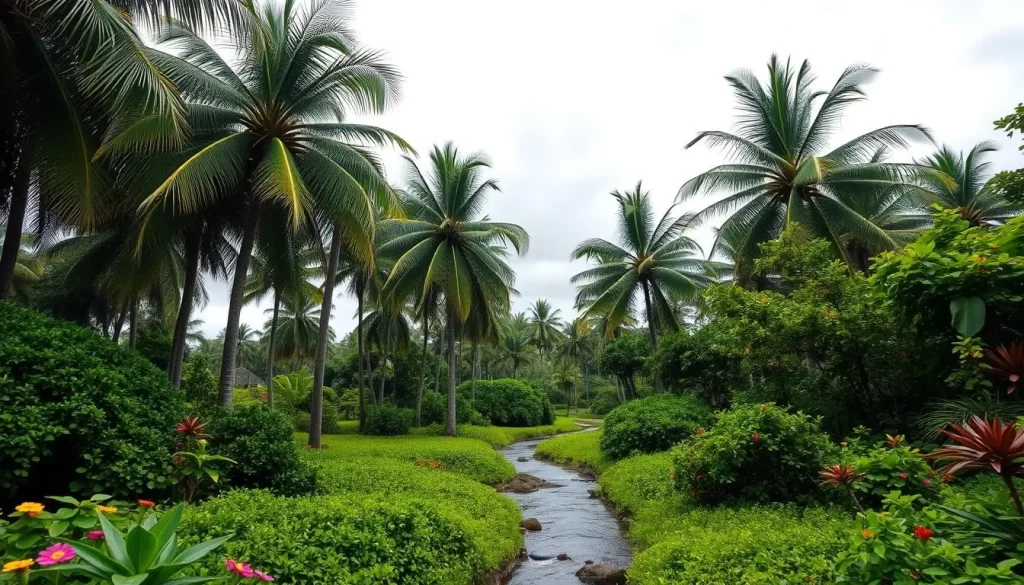
Dry Season Characteristics
In contrast, the dry season, which runs from May to October, brings drier and more comfortable conditions to Christmas Island. The reduced rainfall during these months results in lower humidity, making it ideal for outdoor activities such as hiking and exploring. The trade winds that characterize this season contribute to the pleasant weather, with warm temperatures throughout.
| Season | Weather Conditions | Ideal Activities |
|---|---|---|
| Wet Season (Nov-Apr) | High rainfall, high humidity | Exploring lush vegetation, certain wildlife viewing |
| Dry Season (May-Oct) | Low rainfall, lower humidity, trade winds | Hiking, snorkeling, diving, land-based activities |
The dry season is considered the high season for tourism on Christmas Island, with clearer waters improving visibility for snorkeling and diving. However, this period also attracts more visitors and potentially higher prices for accommodations and activities.
Christmas Island: Best Months for a Weather-Savvy Trip
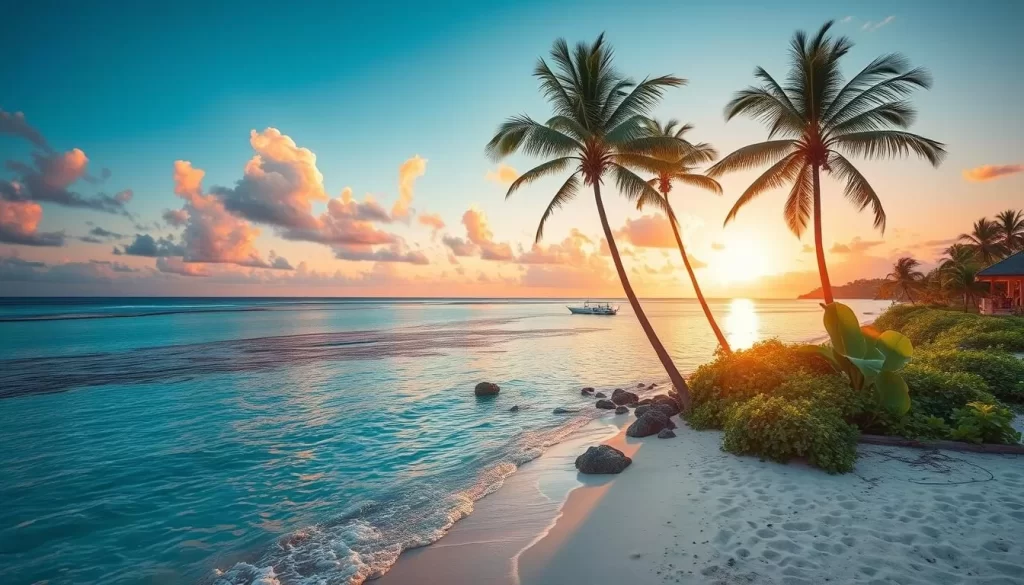
To make the most of your trip to Christmas Island, it’s crucial to choose the right time of year. Understanding the island’s climate and weather patterns can significantly enhance your travel experience.
Top Months for Ideal Weather Conditions
The dry season, from May to October, offers the most favorable conditions for visitors. May and June are particularly pleasant, with comfortable temperatures and minimal rainfall. These months are ideal for outdoor activities such as hiking and exploring the island’s natural beauty.
During this period, you can enjoy snorkeling and diving in the crystal-clear waters surrounding the island, with excellent visibility and calm seas. The dry season also coincides with some of the island’s most spectacular natural events.
Months to Avoid and Why
The peak wet season months, from December to February, can be challenging due to heavy rainfall and higher humidity. These conditions may limit access to certain areas and activities on the island, potentially disrupting your travel plans.
While these months have their drawbacks, they also offer unique experiences, such as witnessing the island’s vibrant red crab migration. Additionally, you may find lower costs for accommodations and tours during this period.
Seasonal Natural Phenomena on Christmas Island
From the iconic red crab migration to various bird nesting seasons, Christmas Island offers a range of natural wonders that make it a unique destination. As you plan your time to visit this incredible place, understanding these phenomena can greatly enhance your experiences.
Red Crab Migration: Timing and Viewing Tips
The red crab migration is a spectacular event that occurs annually on Christmas Island. Typically, the migration happens around seasonal changes, particularly during the wet season, from October to December, although the exact timing can vary from year to year. To witness this phenomenon, visitors should be prepared to venture out early in the morning or at dusk when the crabs are most active. Guided tours are available, offering insights into this natural wonder and ensuring a safe viewing experience.
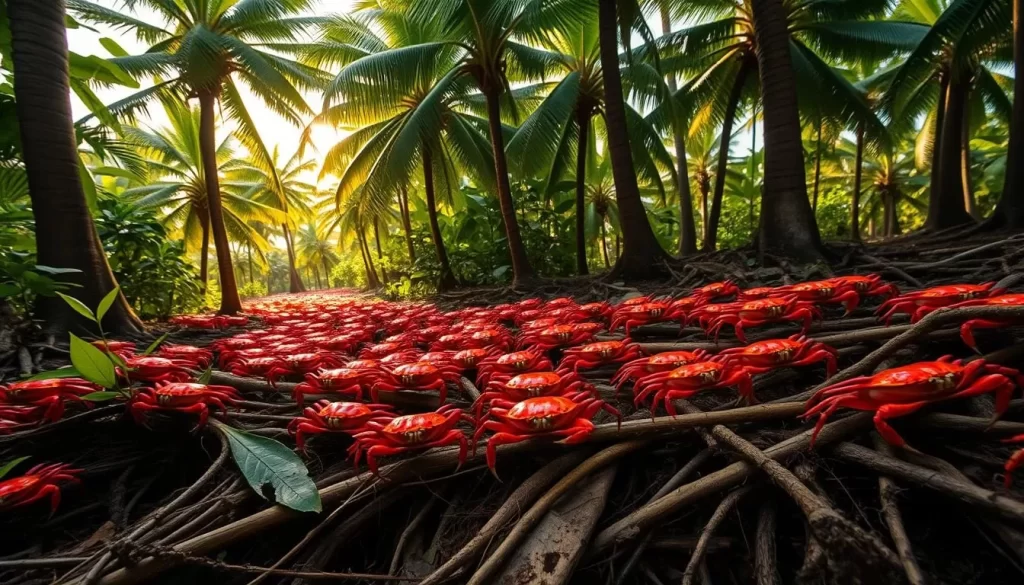
Bird Nesting Seasons and Wildlife Viewing
Christmas Island is renowned for its diverse seabird population, with numerous species nesting on the island throughout the year. The seasonal bird nesting seasons offer a fantastic opportunity for activities like birdwatching. Visitors can expect to see a variety of species, including frigate birds, boobies, and tropicbirds, each with their unique nesting periods. The island’s rich biodiversity extends beyond birds, with reptiles and marine life also being prominent. The different seasons influence animal behavior and visibility, making certain times of the year ideal for specific wildlife viewing experiences. Guided wildlife tours can provide valuable insights and access to these natural wonders.
Planning Activities Around Weather Patterns
Christmas Island’s unique climate means that planning your activities around the weather can greatly enhance your experience. The island’s weather patterns significantly influence the enjoyment and feasibility of various activities throughout the year.
Best Weather for Hiking and Exploring
The dry season, from May to October, is ideal for hiking and exploring Christmas Island’s lush rainforests and rugged terrain. During this period, the weather is generally dry and sunny, making it perfect for trekking to the island’s highest points, such as Murray Hill, or exploring the numerous walking trails.
The cooler months of June to August are particularly pleasant for outdoor activities, with comfortable temperatures and lower humidity. It’s essential to start your hikes early in the morning to avoid the heat and potential rain showers that can occur in the afternoons during the wet season.
Optimal Conditions for Snorkeling and Diving
The late dry season, specifically from August to October, offers the best underwater visibility for snorkeling and diving around Christmas Island. The calm seas and clear waters during this time reveal the island’s vibrant coral reefs and diverse marine life.
Sea temperatures remain pleasant year-round, ranging from 26°C to 28°C (79°F to 82°F), making it comfortable for water activities throughout the year. However, wind patterns and rainfall can affect sea conditions. For instance, the north-western coast is generally calmer during the dry season, while the wet season brings rougher seas to this side.
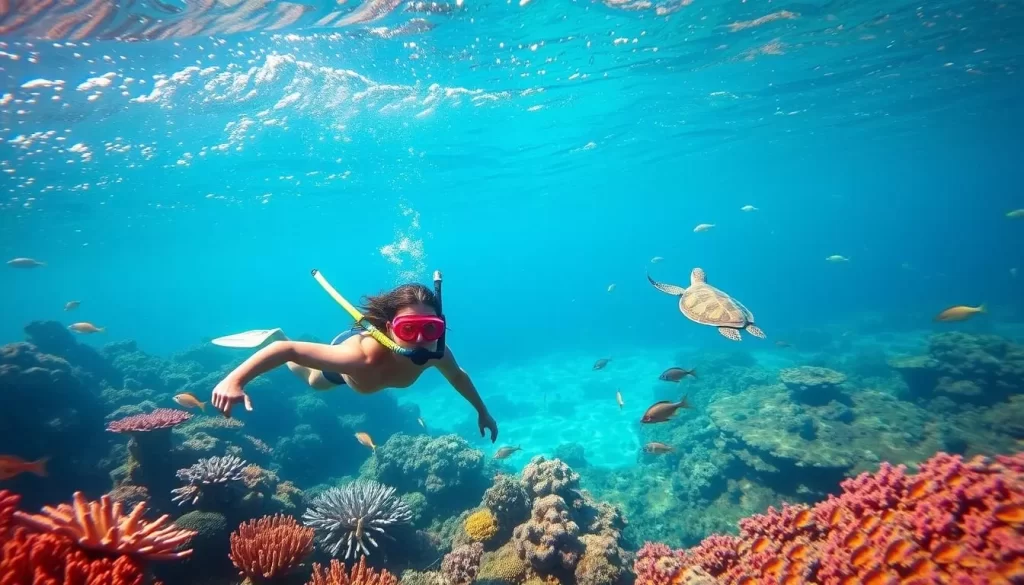
| Activity | Best Time | Conditions |
|---|---|---|
| Hiking | Dry Season (May-Oct) | Dry, sunny, comfortable temperatures |
| Snorkeling/Diving | Late Dry Season (Aug-Oct) | Calm seas, clear waters, good visibility |
Seasonal Travel Costs and Crowd Levels
When planning your trip to Christmas Island, understanding the seasonal travel costs and crowd levels can make a significant difference in your overall experience. The island’s unique attractions and climate mean that the time of year you visit can have a substantial impact on your expenses and the number of tourists you’ll encounter.
Pricing Variations Across Seasons
The distinction between peak and off-peak seasons significantly influences travel costs. During the dry season, from May to October, prices tend to be higher due to the favorable weather conditions. In contrast, the wet season, spanning from November to April, often sees lower prices as it’s considered the off-peak period.
| Season | Months | Pricing | Crowd Levels |
|---|---|---|---|
| Dry Season | May – October | Higher | Higher |
| Wet Season | November – April | Lower | Lower |
| Shoulder Season | April-May & October-November | Moderate | Moderate |
Finding the Optimal Time for Value and Weather
The shoulder seasons, particularly April-May and October-November, often provide the best balance between decent weather and reasonable prices. During these transitional months, you can enjoy relatively favorable conditions without the peak season prices. Monitoring weather forecasts and being flexible with your travel dates can help you snag the best deals. Additionally, some package deals might be available during these periods, offering further value. For travelers who can plan last-minute based on weather forecasts, there are opportunities to capitalize on favorable conditions while avoiding peak prices.
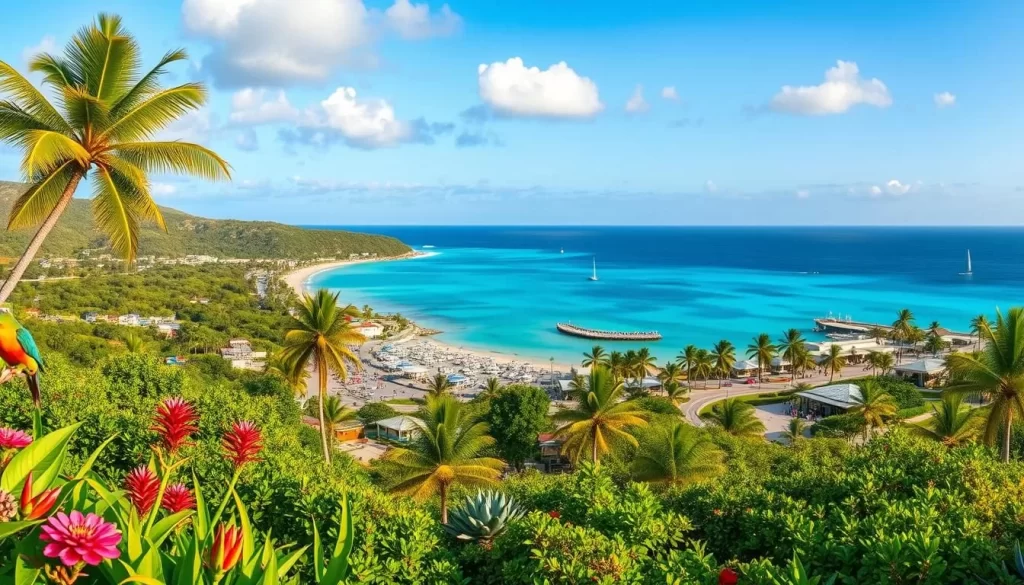
Packing Essentials for Different Seasons
As you prepare for your trip to Christmas Island, understanding the packing essentials for different seasons is crucial. The island’s unique climate and geography demand a thoughtful approach to packing to ensure you are comfortable and prepared for your travel activities.
Wet Season Packing List
During the wet season, it’s essential to pack clothing and gear that can withstand the tropical rain and humidity. You should include:
- Waterproof or water-resistant jackets and pants
- Breathable clothing to keep you cool in between rain showers
- Sturdy footwear that can handle wet conditions, such as hiking boots or water shoes for exploring the island’s beaches and walks
- A portable umbrella or rain poncho for unexpected downpours
Don’t forget to pack a waterproof bag to keep your electronics dry. For a day out, consider packing a lightweight, quick-drying towel.
Dry Season Packing List
For the dry season, your packing list should focus on sun protection and comfort during your travel and exploration of the island. Consider packing:
- Lightweight, breathable clothing that provides sun protection, such as long-sleeved shirts and pants
- High-quality sun protection, including broad-spectrum sunscreen, sunglasses, and a wide-brimmed hat for your day out
- Water bottles or hydration systems to prevent dehydration in the warm, dry conditions
- Layers for cooler evenings or air-conditioned indoor spaces
- A lightweight waterproof jacket for unexpected showers, even though rain is less common during the dry season
When engaging in water activities, choose appropriate snorkeling or diving gear, and consider any specialized equipment needed for specific activities popular during the dry season.
Month-by-Month Weather Guide for Christmas Island
A month-by-month guide to Christmas Island’s weather helps you prepare for your trip and make the most of your time on the island. Understanding the weather patterns is crucial for planning activities and enjoying the unique natural phenomena.
January-June Weather Overview
The first half of the year on Christmas Island starts with the wet season in January, characterized by high humidity and significant rainfall, averaging 300 mm in January. As the year progresses, the wet season continues through April, with decreasing rainfall in the latter months. May marks the beginning of the dry season, with clear skies and stable conditions. June is mid-dry season, with comfortable temperatures and minimal rainfall.
During this period, you can enjoy various activities. For instance, the wet season is ideal for observing certain bird species and enjoying the lush vegetation. As the dry season sets in, hiking and exploring become more comfortable.
July-December Weather Overview
The second half of the year continues with the dry season, characterized by clear and stable weather in July and August. September sees a continuation of dry conditions, but with some signs of change as the season progresses. October is a transitional month, with early signs of the approaching wet season, including increased humidity. November marks the beginning of the wet season, with increasing rainfall and humidity. December is firmly in the wet season, with significant rainfall and high humidity.
The red crab migration typically occurs between October and December, depending on rainfall. This natural phenomenon is a significant event, and the weather conditions during these months can affect the migration timing.
Conclusion: Making the Most of Your Weather-Savvy Trip
Embarking on a journey to Christmas Island necessitates a grasp of its climatic nuances. The island’s distinct wet and dry seasons significantly influence the travel experience. Your best time to visit depends on individual preferences and planned activities. For wildlife viewing, the dry season is ideal, while diving and hiking can be enjoyed during the wet season with proper planning.
Flexibility is key when planning your trip, as weather patterns can impact your plans. Combining weather information with other factors like special events and personal schedule constraints will help you make the most of your trip. Even during less ideal weather periods, Christmas Island offers unique experiences worth considering. Always check current conditions and forecasts before finalizing your plans, and be prepared for changes due to climate change.
With its unique natural beauty and diverse attractions, Christmas Island is a destination that promises an unforgettable experience, regardless of when you choose to visit. To stay updated on weather conditions, special events, and travel deals, be sure to check relevant resources before your trip.
The above is subject to change.
Check back often to TRAVEL.COM for the latest travel tips and deals.
